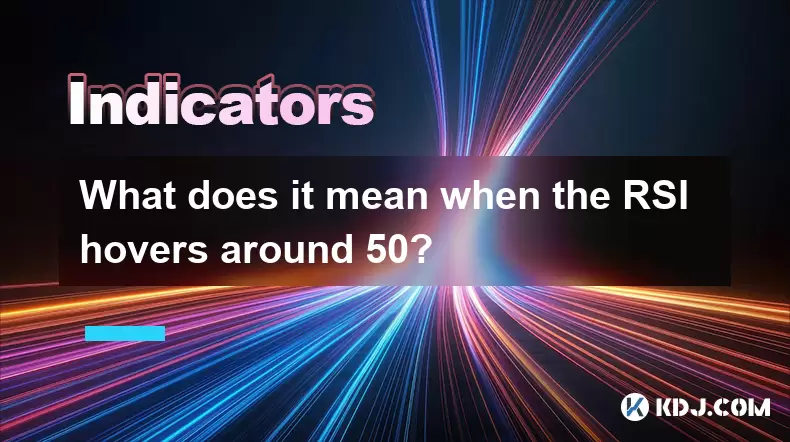-
 Bitcoin
Bitcoin $115100
-1.30% -
 Ethereum
Ethereum $4758
-1.70% -
 XRP
XRP $3.027
-2.19% -
 Tether USDt
Tether USDt $0.9998
-0.01% -
 BNB
BNB $883.2
-1.42% -
 Solana
Solana $204.0
2.62% -
 USDC
USDC $1.000
0.02% -
 Dogecoin
Dogecoin $0.2371
-0.97% -
 TRON
TRON $0.3612
-1.24% -
 Cardano
Cardano $0.9128
-2.19% -
 Chainlink
Chainlink $26.13
-3.93% -
 Hyperliquid
Hyperliquid $44.73
0.90% -
 Sui
Sui $3.715
-0.56% -
 Stellar
Stellar $0.4153
-2.41% -
 Ethena USDe
Ethena USDe $1.000
-0.04% -
 Bitcoin Cash
Bitcoin Cash $588.9
-2.06% -
 Avalanche
Avalanche $25.91
3.27% -
 Hedera
Hedera $0.2525
-1.45% -
 Litecoin
Litecoin $120.9
-1.35% -
 UNUS SED LEO
UNUS SED LEO $9.607
0.30% -
 Toncoin
Toncoin $3.382
-0.31% -
 Shiba Inu
Shiba Inu $0.00001329
-0.38% -
 Uniswap
Uniswap $11.38
-1.67% -
 Polkadot
Polkadot $4.222
2.83% -
 Aave
Aave $354.5
4.93% -
 Dai
Dai $0.0000
0.00% -
 Bitget Token
Bitget Token $4.704
-1.49% -
 Cronos
Cronos $0.1565
1.83% -
 Ethena
Ethena $0.7463
1.55% -
 Monero
Monero $265.8
-0.39%
What does it mean when the RSI hovers around 50?
An RSI near 50 indicates neutral momentum, reflecting market indecision and potential consolidation in crypto’s volatile environment.
Aug 13, 2025 at 11:36 am

Understanding the RSI and Its Neutral Zone
The Relative Strength Index (RSI) is a momentum oscillator widely used in cryptocurrency technical analysis to measure the speed and change of price movements. It operates on a scale from 0 to 100, with levels above 70 typically indicating overbought conditions and below 30 suggesting oversold conditions. When the RSI hovers around 50, it reflects a state of equilibrium between buying and selling pressure. This value sits at the midpoint of the RSI scale, symbolizing neutral market momentum. In the context of crypto trading, where volatility is common, an RSI near 50 often suggests that neither bulls nor bears are in control, and the asset may be consolidating after a prior trend.
What Does an RSI Near 50 Indicate About Market Sentiment?
An RSI value lingering around 50 reveals a market lacking clear directional bias. This can occur during periods of range-bound trading, where price fluctuates within a defined support and resistance zone. In such scenarios, traders observe that upward and downward price movements are nearly balanced. For instance, if Bitcoin’s RSI remains between 45 and 55 over several candlesticks, it implies that recent gains and losses are canceling each other out. This lack of momentum often precedes either a breakout or a continuation of sideways movement. Traders should pay close attention to volume and price action during these phases, as a surge in volume accompanied by a decisive move beyond the consolidation range may signal the start of a new trend.
How to Interpret RSI Fluctuations Around the 50 Level
When the RSI oscillates around 50, it's essential to analyze the pattern of these fluctuations. Minor swings above and below 50—such as moving from 48 to 52 and back—suggest indecisiveness in the market. However, sustained movement slightly above 50 (e.g., 51–54) may hint at subtle bullish bias, while consistent dips just below 50 (e.g., 46–49) could indicate underlying bearish pressure. In crypto markets, where sentiment shifts rapidly, even small deviations from 50 can be meaningful when combined with other indicators. Observing whether the RSI forms higher lows or lower highs during this phase helps determine if accumulation or distribution is taking place.
Using RSI at 50 in Conjunction with Other Technical Tools
Relying solely on RSI near 50 can lead to misleading interpretations. It is more effective when combined with complementary tools:
- Moving Averages: Check if the price is trading above or below key moving averages like the 50-day or 200-day MA. A price above the MA with RSI near 50 may suggest underlying strength.
- Support and Resistance Levels: If the price is testing a major resistance level while RSI hovers at 50, it may struggle to break through without stronger momentum.
- Volume Indicators: A flat RSI with declining volume reinforces consolidation, whereas rising volume during a 50 RSI phase may precede a breakout.
- Candlestick Patterns: Look for doji, spinning tops, or inside bars near the 50 RSI zone, as these often signal indecision and potential reversal or breakout.
For example, if Ethereum shows a doji candle at a psychological price level like $3,000 while RSI is at 49, it strengthens the case for a pause before the next directional move.
Practical Trading Strategies When RSI Hovers at 50
Traders can adopt specific strategies when RSI remains near the midpoint: - Range Trading: Identify clear support and resistance boundaries. Enter long positions near support when RSI approaches 50 from below and short near resistance when RSI approaches 50 from above.
- Breakout Confirmation: Wait for the RSI to move decisively beyond 50—either above 55 or below 45—alongside a closing price outside the consolidation range before entering a trend-following trade.
- Mean Reversion in Sideways Markets: In established sideways markets, traders might buy when RSI dips to 45 and sell when it rises to 55, assuming the 50 level acts as a magnetic center.
- Divergence Scanning: Monitor for hidden bullish or bearish divergences. For instance, if price makes a higher low but RSI makes a lower low near 50, it may signal weakening momentum despite apparent strength.
Always set stop-loss orders just outside the consolidation zone to manage risk during false breakouts.
Common Misinterpretations of RSI at 50
A frequent mistake is assuming that RSI at 50 means a reversal is imminent. This is not necessarily true. A neutral RSI simply reflects balance, not an upcoming change in direction. Another misconception is equating a return to 50 after an overbought or oversold condition with a completed correction. In fast-moving crypto markets, assets can re-enter overbought or oversold territory quickly after touching 50. Additionally, some traders treat 50 as a support level, but it has no inherent structural significance like a Fibonacci level or historical price floor. Relying on it as such without confirmation from price action can result in poor entries.Frequently Asked Questions
Can RSI staying at 50 predict a trend reversal?
No, RSI at 50 does not predict reversals by itself. It indicates balance between buyers and sellers. A reversal signal requires additional confirmation, such as a break of a trendline, a reversal candlestick pattern, or divergence between price and RSI.Is RSI at 50 more significant in certain timeframes?
Yes, RSI near 50 on higher timeframes like the daily or weekly chart carries more weight than on lower timeframes like the 5-minute chart. On longer timeframes, it reflects broader market equilibrium and may indicate a major pause before the next leg.Should I trade when RSI crosses 50 from below or above?
Crossing 50 alone is not a reliable signal. Wait for corroboration—such as increased volume, a close beyond a key price level, or alignment with moving averages—before acting. A simple crossover can result in whipsaws, especially in choppy markets.How does volatility in crypto affect RSI behavior around 50?
High volatility can cause RSI to swing rapidly around 50, creating false signals. In such environments, smoothing the RSI (e.g., using a longer period like 14 or 21) or combining it with Bollinger Bands can help filter out noise and improve accuracy.
Disclaimer:info@kdj.com
The information provided is not trading advice. kdj.com does not assume any responsibility for any investments made based on the information provided in this article. Cryptocurrencies are highly volatile and it is highly recommended that you invest with caution after thorough research!
If you believe that the content used on this website infringes your copyright, please contact us immediately (info@kdj.com) and we will delete it promptly.
- Crypto, Pepe, and Investment: Navigating the Meme Coin Mania in 2025
- 2025-08-24 06:45:29
- Crypto Market Recovery: Unearthing ROI Gems in 2025
- 2025-08-24 05:25:35
- Aave, World Liberty, and Token Allocation: Decoding the DeFi Buzz
- 2025-08-24 05:25:35
- Crypto Presales & Exchange Launches: What's Hot Now?
- 2025-08-24 05:45:17
- Meme Coin Mania: Experts Rank Layer Brett as the Top Contender
- 2025-08-24 05:45:18
- Sui Price Prediction: Will the Breakout Move Stick?
- 2025-08-24 06:05:29
Related knowledge

What does it mean when the +DI and -DI cross frequently in the DMI indicator but the ADX is flattening?
Aug 11,2025 at 03:15am
Understanding the DMI Indicator ComponentsThe Directional Movement Index (DMI) is a technical analysis tool composed of three lines: the +DI (Positive...

What does the sudden appearance of a "dark cloud cover" candlestick pattern during an uptrend indicate?
Aug 13,2025 at 11:35am
Understanding the 'Dark Cloud Cover' Candlestick PatternThe dark cloud cover is a bearish reversal pattern in technical analysis that typically appear...

What does it mean when the moving average, MACD, and RSI all send buy signals simultaneously?
Aug 11,2025 at 01:42pm
Understanding the Convergence of Technical IndicatorsWhen the moving average, MACD, and RSI all generate buy signals at the same time, traders interpr...

What does it mean when both the KDJ indicator and the RSI show overbought signals simultaneously?
Aug 13,2025 at 11:35am
Understanding the KDJ Indicator in Cryptocurrency TradingThe KDJ indicator is a momentum oscillator derived from the Stochastic Oscillator, widely use...

What does it mean when the price is trading above the SAR indicator but the red dots are densely packed?
Aug 09,2025 at 11:49pm
Understanding the SAR Indicator and Its Visual SignalsThe SAR (Parabolic Stop and Reverse) indicator is a technical analysis tool used primarily to de...

What does it mean when the candlestick chart forms a "Morning Star" but trading volume is sluggish?
Aug 12,2025 at 06:28pm
Understanding the Morning Star Candlestick PatternThe Morning Star is a three-candle bullish reversal pattern commonly observed in cryptocurrency pric...

What does it mean when the +DI and -DI cross frequently in the DMI indicator but the ADX is flattening?
Aug 11,2025 at 03:15am
Understanding the DMI Indicator ComponentsThe Directional Movement Index (DMI) is a technical analysis tool composed of three lines: the +DI (Positive...

What does the sudden appearance of a "dark cloud cover" candlestick pattern during an uptrend indicate?
Aug 13,2025 at 11:35am
Understanding the 'Dark Cloud Cover' Candlestick PatternThe dark cloud cover is a bearish reversal pattern in technical analysis that typically appear...

What does it mean when the moving average, MACD, and RSI all send buy signals simultaneously?
Aug 11,2025 at 01:42pm
Understanding the Convergence of Technical IndicatorsWhen the moving average, MACD, and RSI all generate buy signals at the same time, traders interpr...

What does it mean when both the KDJ indicator and the RSI show overbought signals simultaneously?
Aug 13,2025 at 11:35am
Understanding the KDJ Indicator in Cryptocurrency TradingThe KDJ indicator is a momentum oscillator derived from the Stochastic Oscillator, widely use...

What does it mean when the price is trading above the SAR indicator but the red dots are densely packed?
Aug 09,2025 at 11:49pm
Understanding the SAR Indicator and Its Visual SignalsThe SAR (Parabolic Stop and Reverse) indicator is a technical analysis tool used primarily to de...

What does it mean when the candlestick chart forms a "Morning Star" but trading volume is sluggish?
Aug 12,2025 at 06:28pm
Understanding the Morning Star Candlestick PatternThe Morning Star is a three-candle bullish reversal pattern commonly observed in cryptocurrency pric...
See all articles

























































































